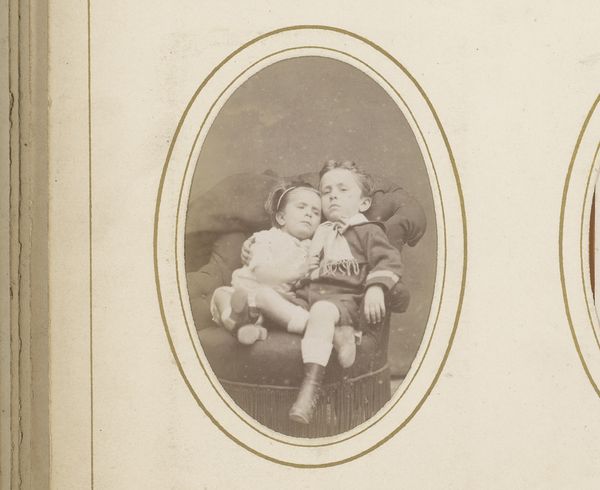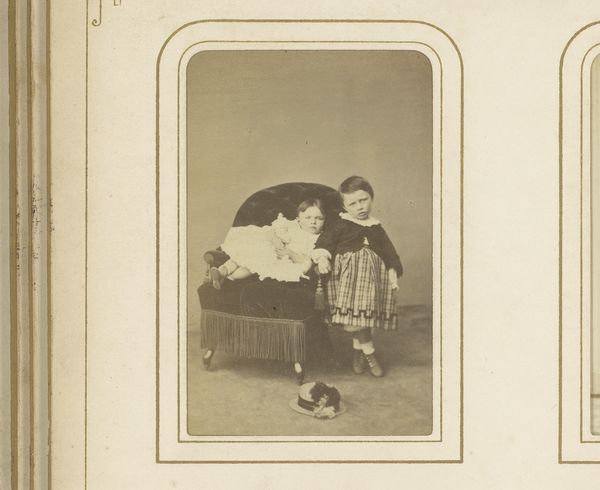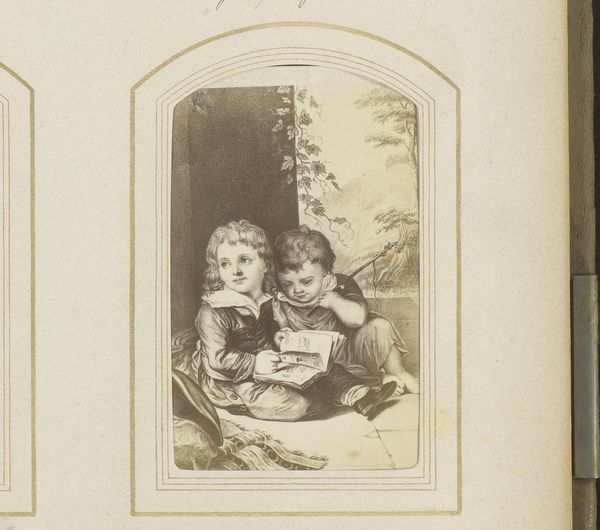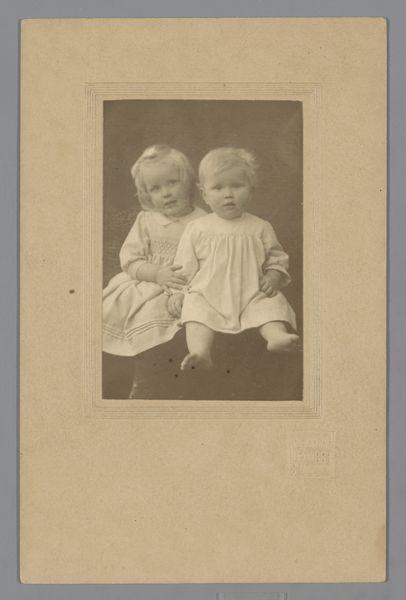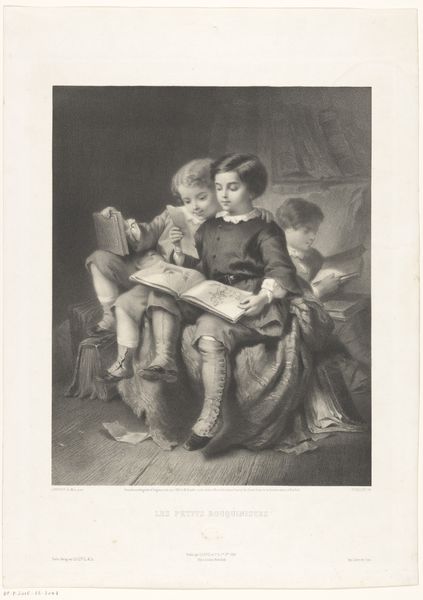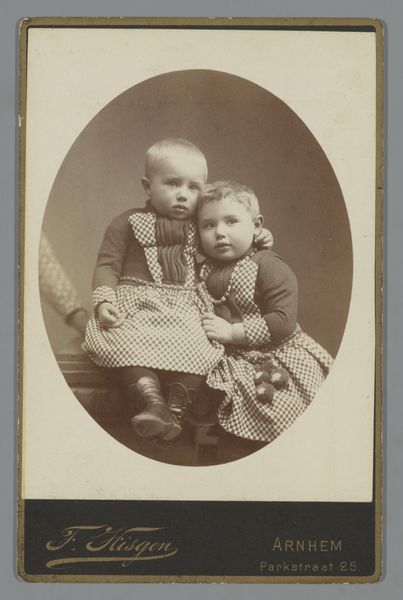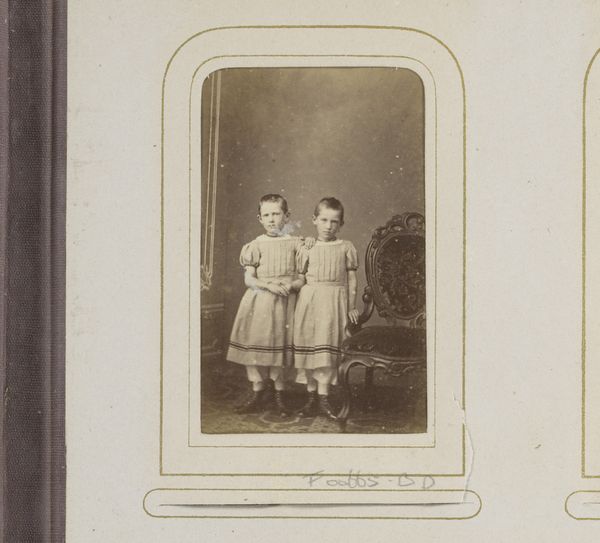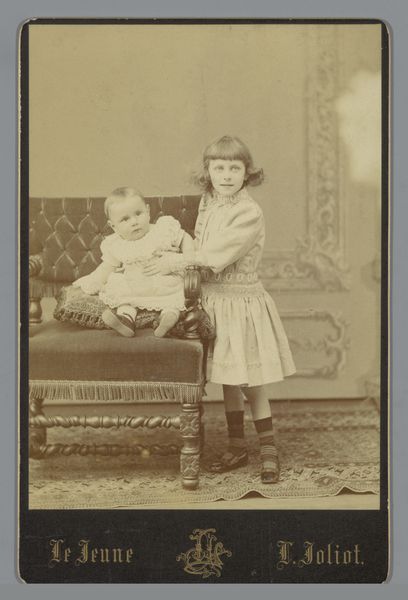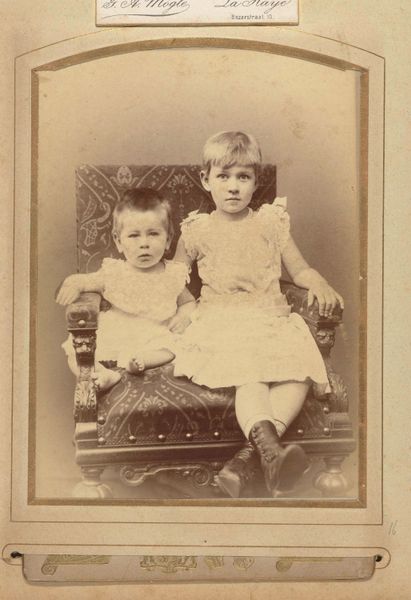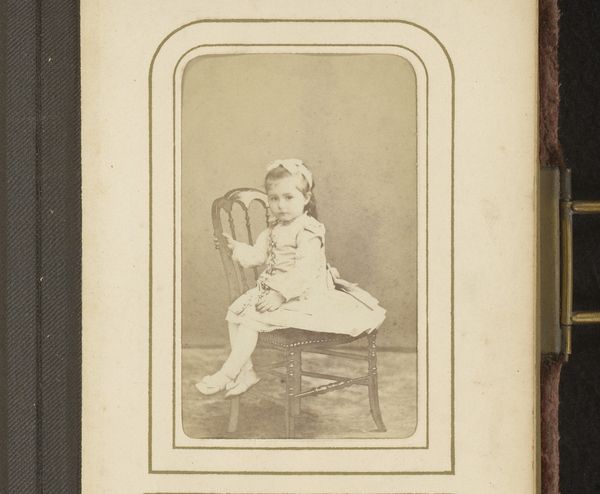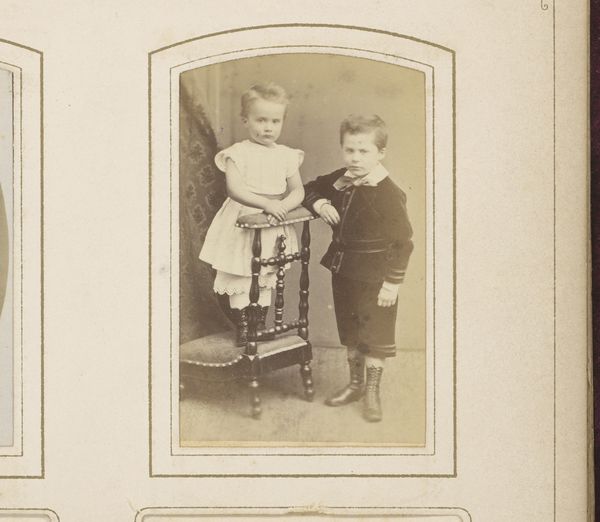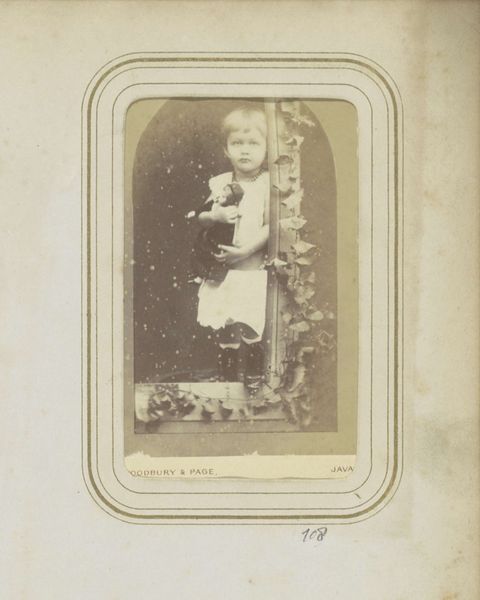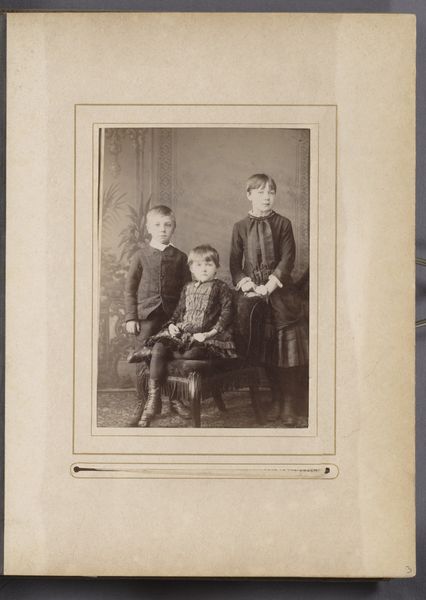
drawing, print, engraving
#
portrait
#
drawing
#
16_19th-century
# print
#
child
#
limited contrast and shading
#
19th century
#
watercolour illustration
#
genre-painting
#
academic-art
#
engraving
Dimensions: height 558 mm, width 437 mm
Copyright: Rijks Museum: Open Domain
Curator: Looking at this piece, I immediately feel a sense of… melancholic innocence? The limited contrast and the solemn expressions... it's very poignant. Editor: Indeed. What you are seeing is an engraving entitled "Portret van twee onbekende kinderen," or "Portrait of two unknown children," made in 1845. It's currently housed right here at the Rijksmuseum. Curator: Unknown children… that adds to the mystery, doesn't it? I mean, what were their lives like? Were they aware they were being immortalized in this way? The artist, Joseph Schubert, captured them so formally, yet there's a vulnerability there. It feels like holding a faded photograph from your own attic. Editor: Absolutely. Schubert worked during a time when portraiture, even of children, was steeped in a very particular, formalized social structure. Children of affluent families were often presented as miniature adults, meant to convey a sense of propriety, status, and future promise. Note their clothing; their poses and presentation are all deliberately cultivated. Curator: That velvet though! And those elaborate frilly collars! The level of detail, the way it captures the light… There’s such an attentiveness and gentleness of feeling for textures that gives the picture a painterly dimension beyond the engraving. Editor: Yet it’s still important to acknowledge what these images omit. What about the working-class children? The children of color? Whose stories don’t appear within these archives? Art always tells us as much about what is excluded as it does about what is included. Who had the power to be recorded, and whose existences were considered less deserving of preservation? Curator: That's so true. It reminds me of rummaging through an old dress-up chest—the sweetness is laced with a touch of loss. But it does leave room for us to dream stories into their eyes, filling in what’s been left out, finding echoes across time. What kind of narrative, what kind of action would they partake in had they lived a different, more acknowledged life? Editor: And ultimately, asking ourselves how we can be more critical, active listeners in the archives and museums of today. Recognizing the limitations of whose stories are represented in the collections will make us be conscious storytellers as well. Curator: What a wonderful perspective. I am always enthralled when new and old voices convene, making way for dialogue.
Comments
No comments
Be the first to comment and join the conversation on the ultimate creative platform.
